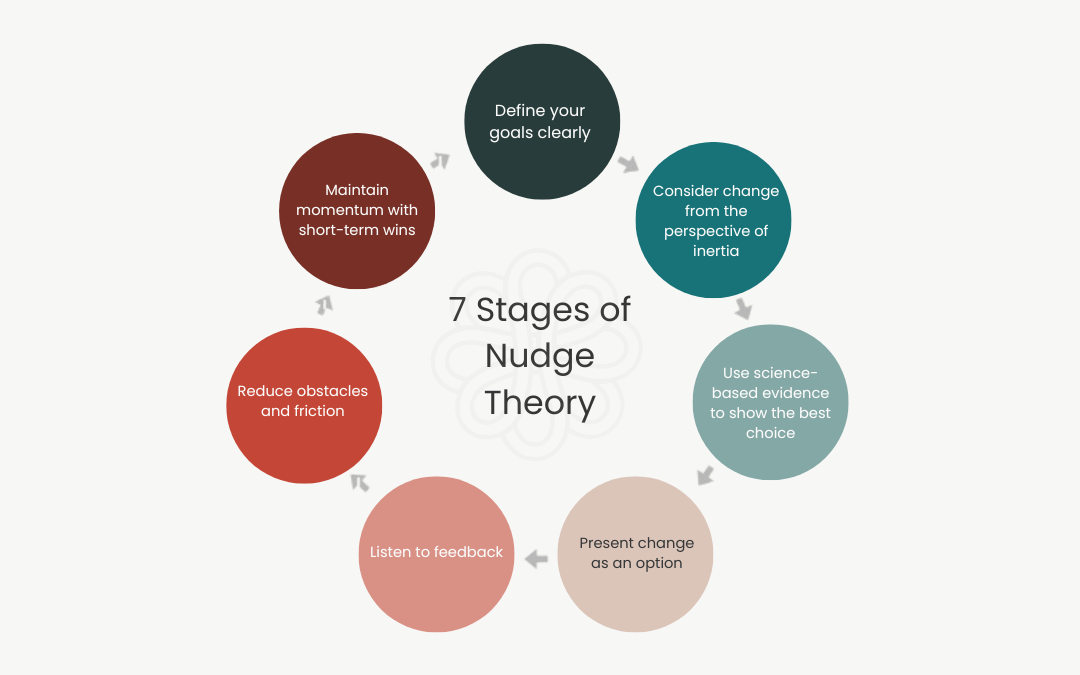Read time: 4 min 50 sec
👉 Educate Your Clients to Use Journey Nudge Well
Below is a guide for how you can educate your clients to use Journey Nudge well, ensuring they get the most out of this personalized experience while providing you with the data you need to support their growth.
Here’s what we got for ya:
- How to help clients use Journey as a personalized tool
- Encouraging interaction with nudges as an accountability practice
- How feedback shapes future nudges
- Establishing a routine
- Learn how to craft effective nudges
🧠 Building Awareness for Client Success
Help your clients understand that Journey Nudge is a collaborative tool. The nudges they receive are suggestions, not prescriptions. Clients have the power to personalize their nudges, creating a journey that aligns with their unique goals and preferences.
- Key Message to Share: “Think of nudges as a way to stay connected to your goals. Interact with the ones that resonate most, and fine-tune the ones that don’t. The more you engage, the more personalized your experience becomes.”
Encourage clients to take ownership of their journey by experimenting with different nudges and providing feedback. This builds awareness and helps them see Journey as a self-directed growth partner.
🤔 Encouraging Interaction with Nudges for Accountability
Nudges are opportunities for clients to reflect, act, and stay accountable. Encourage your clients to interact with their nudges, even if it’s just to respond with a quick reaction.
- How to Frame It: “Every time you respond to a nudge—whether it’s a ‘👍,’ ‘❤️,’ or ‘👎’—you’re helping me understand what’s working for you. If you take action on a nudge, it shows me you’re committed to the process and gives us a starting point to discuss progress in our next session.”
This interaction not only holds clients accountable but also provides you with actionable insights into their engagement and progress.
👍 Feedback Shapes Future Nudges
Journey thrives on feedback. Let your clients know that their reactions and responses directly impact the quality and relevance of their future nudges.
-
Practical Tips for Clients:
- React to Nudges: Tap ‘❤️,’ ‘👍,’ or ‘👎’ to refine future recommendations.
- Give Feedback: Use the chat feature to share how a nudge made them feel or what action it inspired.
- Echo Messages: Encourage clients to send an “echo” (a message to their future self) by typing “echo” and crafting a short, motivational note.
-
What You Can Say: “If you ever want to send your future self a nudge like, Call your mom. Simply text Journey: echo call your mom in the chat.”
🔁 Establishing a Routine
Educating your clients on how to integrate Journey into their daily lives is essential.
- Set Expectations: “Journey works best when it becomes part of your routine. Check in daily, react to your nudges, and reflect on your progress.”
- Tie it to Their Goals: “Think of Journey as your personal accountability partner—it’s here to help you take those small, consistent steps toward your big goals.”
- Celebrate Wins: Highlight when a client’s engagement with Journey results in progress.
Journey’s analytics give you, as a coach, a clear picture of how engaged your client is and where they may need additional support. By encouraging consistent interaction, you’ll gather meaningful data to inform your coaching sessions.
- Encourage Engagement: “When you respond to a nudge or act on it, I can see how you’re progressing. It’s a way for us to track your journey and make sure we’re focusing on the right areas.”
- Use Data to Refine Sessions: Look for patterns in client engagement to identify what’s working and where adjustments may be needed.
🗣️ Crafting Nudges as the Coach
As a coach, you have the ability to customize nudges based on your client’s goals. Here are some tips for crafting nudges that work:
- Be Specific: Focus on a single, actionable idea. For example, “Take a 5-minute break to stretch and reset your focus” is more effective than “Remember to relax.”
- Be Positive: Frame nudges in a supportive tone. Instead of “Don’t procrastinate,” try “Set a timer for 10 minutes and start small—you’ve got this!”
- Be Relatable: Use your client’s own words or goals to make the nudge feel personal.
What did you think of today’s edition?
- Extremely helpful 🔥
- It was okay 👍
- Not that helpful 👎
Comment below.

